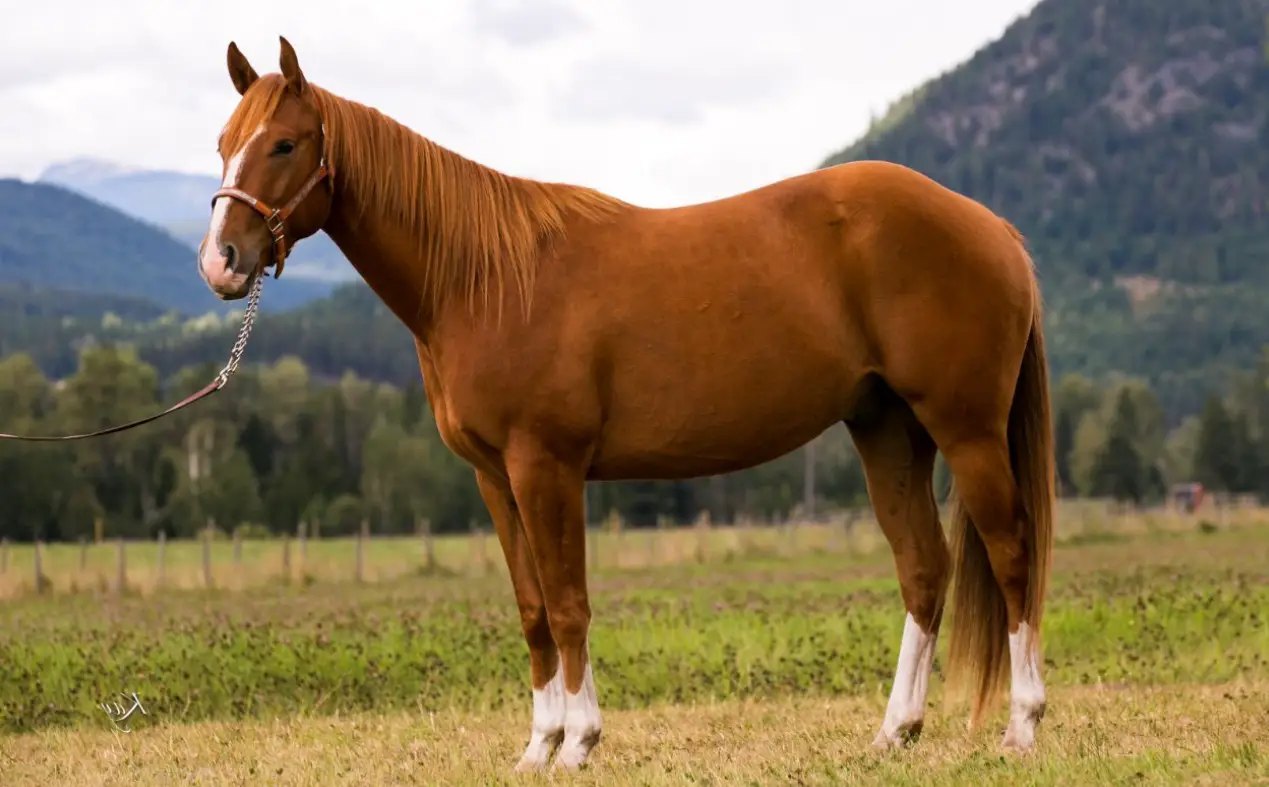Last Updated on June 28, 2020 by Allison Price
Sometimes breeders cross two best horse breeds to get the best of both. An appendix horse is an example of this. An appendix horse is a cross between a quarter horse and a thoroughbred. This breed has a quarter horse’s calmer disposition and thoroughbred’s athleticism. Appendix horse is larger than a standard Quarter Horse. But, it is less rangy than a thoroughbred. They are also more refined than the Quarter Horses. But, they are not as elegant as the thoroughbred in appearance.
What is Appendix Horse’s good at?
One of the hallmark categories of Appendix Horses is their versatility. If trained, they can excel in any discipline. This includes naming a few:
- Halter
- Western Pleasure
- Hunter Under Saddle
- Racing
- Barrel Racing
- Team Penning
- Team Sorting
- Jumping
Appendix horses can even excel in areas that QH or Thoroughbreds do as they have DNA from both. Keep in mind that they are great pleasure horses as well as for hobbies like trail riding.
Nowadays, a lot of people use appendix horses for barrel racing and had great success. These horses, yet, are no more than your standard quarter horse. It still comes down to the proper training, almost as much as the bloodlines.
Appendix Horse Characteristics & Physique
The best characteristics of Quarters and Thoroughbreds are then found in the Appendix. Its characteristics from both breeds exist to varying degrees.
Stock-type horses tend to be compact and a little shorter. It has greater muscle mass, while still being agile. Racing-type is taller and leaner with smoother muscling.
Appendix horses stand between 15-17 hands. They exist in a variety of colors. This includes black, bay, chestnut, dun, buckskin, sorrel, and roan.
Appendix horse’s personality and versatility are like the Quarter Horse. These horses usually have an even disposition, are social and generally easy keepers. Any competitive ‘hotness’ is usually directed into their work, especially speed sports.
Appendix Horse can be very tall but they can also be very short. It would not be then farfetched to see an Appendix horse that is 14.2 hands or even shorter.
Appendix Horse’s Percentage Breed
An Appendix Quarter Horse can only be then bred to a regular registered Quarter Horse. A breed between a horse with Appendix papers and Thoroughbred makes its foal ineligible for registration. If you buy an Appendix horse, this doesn’t mean the horse is half thoroughbred and half QH already. The actual percentage of each breed depends on the parents’ pedigree.
An Appendix horse can also be mostly Quarter Horse. A Quarter Horse that is then bred to a Thoroughbred will have a foal that is usually registered as an Appendix. You can still produce registered foals from that horse even if it doesn’t earn its ROM. It needs to be then bred to a regular registry quarter horse. To do that, you need to start off with a horse that is 50% Thoroughbred and 50% Quarter Horse. If it is then bred to a 100% foundation quarter horse, the resulting foal has 75% Quarter Horse blood. You will now register that as Appendix.
Once again, if that foal does not receive its ROM, it can be then bred but must be to a regular registry QH. If a horse is then bred to a foundation Quarter Horse, the foal is now 87.5% Quarter Horse. This could continue for generations if none of the foals earn points to move to the regular registry. You could have an Appendix then registered horse that is over 90% Quarter Horse.
Registering an Appendix Horse
The American Quarter Horse Association requires the thoroughbred parent’s approval. This is before you can apply for an Appendix horse registration. A photocopy of the Jockey Club certificate must be then included. It should be front and back. This proves you own the horse in question.
The Jockey Club is the legal body for licensing thoroughbred horses. Send your thoroughbred in four-color pictures, along with the necessary application fee. The AQHA also calls for a statement that allows Jockey Club to check for DNA evidence, if necessary.
An Appendix registered horse who earns 10 points in a race is eligible for full papers. That means that they have competed with other quarter horses, and won. Their Appendix papers are then turned in and they receive regular papers. They can show in racing, performance, or halter to earn their Register of Merit award. They must meet a few requirements before it moves into the regular registry.
Appendix horses can be then advanced as long as:
- They are not parrot mouthed
- They are not cryptorchid
- Their white markings are not excessive
- They are HYPP N/N
If all those conditions are usually met, the owner will pay a small fee. The horse will no longer be in the Appendix registry and becomes a regular quarter horse.
Differences between a Quarter Horse and Thoroughbred
There are actually many differences, but the following are what matters the most. Thoroughbreds originated in England while Quarter Horses are from Spain. They are very lean and tall for long-distance races. Thoroughbreds do look stronger despite their slim build. Quarters are stocky and excellent sprinters. Quarter Horse looks muscular and wider. The Quarter horses tend to live a couple of years longer than the Thoroughbreds.


